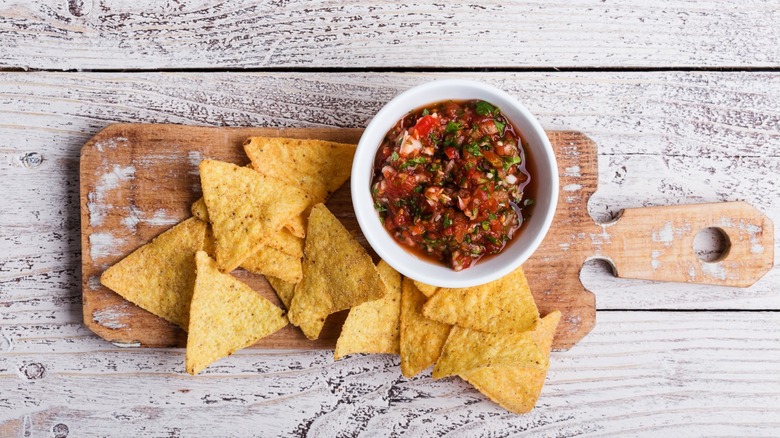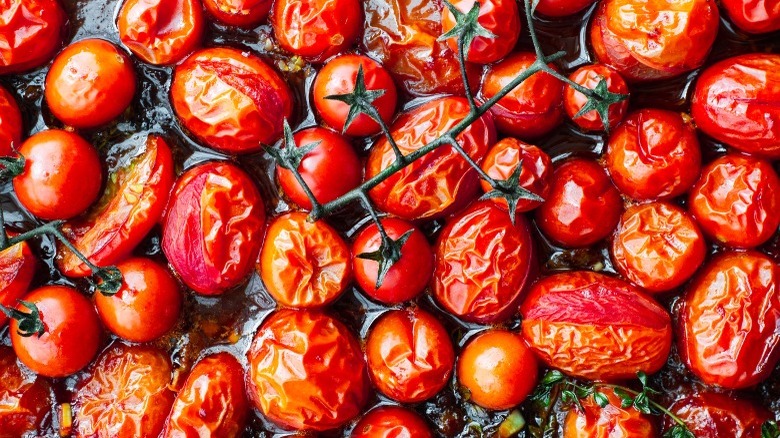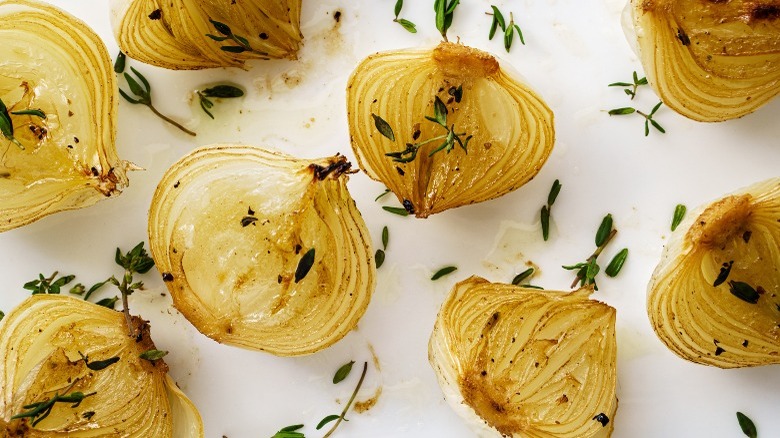The Extra Step That Gives Homemade Salsa Way More Flavor
If you're going to the trouble of making homemade salsa, you want it to be more than a dip — you want it to be the main feature of the pre-dinner festivities. Standout salsa comes from roasting at least some of your veggies to create a deep, smoky, rich, complex flavor so exceptional you have to pop for the good chips — no stale tortilla chips for this salsa!
Roasting creates a nuance that raw veggies can't match. Under high, dry heat, tomatoes, peppers, onions, and garlic develop an unexpected sweetness and smoky, charred flavor. Each rich and flavorful bite delivers a taste of the best summer has to offer. Control the smokiness by adding both roasted and fresh veggies, or top it off with fresh herbs and a splash of citrus to counterbalance the char and add even more complexity. This contrast ensures your salsa is perfectly balanced, flavorful, and irresistible.
Why roasting makes such a big difference
When you roast vegetables, they lose water, concentrating their flavor and caramelizing the natural sugars. That intensifies their sweetness and taste, while the char they develop on the drier outside edges contributes a smoky flavor.
Garlic and onions lose their characteristic sharpness, peppers develop a more nuanced heat, and, crucially, tomatoes become denser and less waterlogged. Water has no flavor on its own, so all it really does is thin out the salsa and bring nothing to the table. It's the world's most annoying dinner guest. By reducing it, you create a more robust dip that actually clings to the chips and delivers the flavor impact you're looking for.
The salsa you make with your new, drier, tastier veggies is a unified flavor bomb with just the right texture. It doesn't taste like tomatoes with peppers and onions. It's a cohesive salsa, smooth and smoky, with just the right amount of heat. Before you know it, you'll be expanding your repertoire with habanero salsa and tomatillo salsa.
How to get the most out of roasting for salsa
Optimal vegetable roasting is the key to the best homemade salsa. So there are a few things you should know. You get better-tasting salsa from peak-ripeness veggies, especially when it comes to tomatoes. But roasting is also a practical way to improve the tomatoes' flavor at less favorable stages of ripeness. And you can absolutely use drained canned tomatoes. They're already peeled, so the outside won't char, but letting the water evaporate still yields a superior salsa, especially if everything else is caramelized.
Put your other (drier) veggies on a separate rimmed tray from the tomatoes if you can. Either way, don't overcrowd them or they'll braise in their own juices rather than roast. Oiling your veggies helps them brown more efficiently, while salt and pepper improve flavor. But most important is the high-heat oven (400 degrees Fahrenheit minimum). It may take an hour or more, but they aren't done until they're charred black, the tomatoes are jammy, and the other veggies are soft. Flipping them halfway through spreads the caramelization around.
You can skin them if you'd like. Leaving it on gives you a smokier salsa, but some people don't like the texture. Just let them cool to the touch before trying to pull the skin off. Also, reserve some of the cooked-out liquid from the tomato tray to adjust the texture of your salsa without diluting the flavor.


